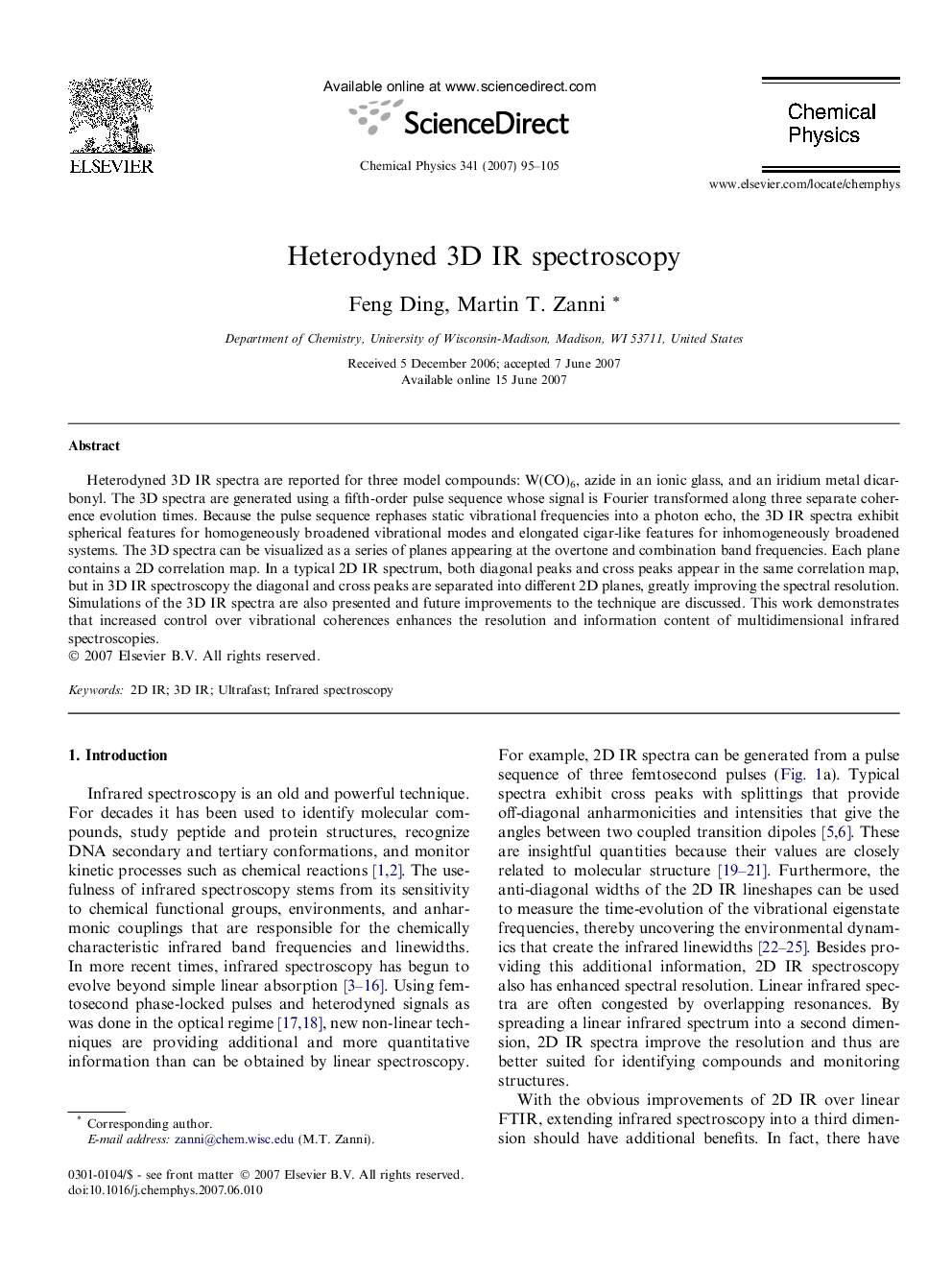| Article ID | Journal | Published Year | Pages | File Type |
|---|---|---|---|---|
| 5376092 | Chemical Physics | 2007 | 11 Pages |
Abstract
Heterodyned 3D IR spectra are reported for three model compounds: W(CO)6, azide in an ionic glass, and an iridium metal dicarbonyl. The 3D spectra are generated using a fifth-order pulse sequence whose signal is Fourier transformed along three separate coherence evolution times. Because the pulse sequence rephases static vibrational frequencies into a photon echo, the 3D IR spectra exhibit spherical features for homogeneously broadened vibrational modes and elongated cigar-like features for inhomogeneously broadened systems. The 3D spectra can be visualized as a series of planes appearing at the overtone and combination band frequencies. Each plane contains a 2D correlation map. In a typical 2D IR spectrum, both diagonal peaks and cross peaks appear in the same correlation map, but in 3D IR spectroscopy the diagonal and cross peaks are separated into different 2D planes, greatly improving the spectral resolution. Simulations of the 3D IR spectra are also presented and future improvements to the technique are discussed. This work demonstrates that increased control over vibrational coherences enhances the resolution and information content of multidimensional infrared spectroscopies.
Keywords
Related Topics
Physical Sciences and Engineering
Chemistry
Physical and Theoretical Chemistry
Authors
Feng Ding, Martin T. Zanni,
